The Complete Carpenter: In the Mouth of Madness (1994)
“I think, therefore you are.”
—Sutter Cane (Do you read Sutter Cane?)
John Carpenter’s career couldn’t have taken a sharper turn than to go from the impersonal director-for-hire Memoirs of an Invisible Man, targeted toward a mainstream date-night audience, to In the Mouth of Madness, a highly personal film aimed at the narrowest and most specific audience of horror lovers possible. Of course, In the Mouth of Madness was a financial failure — the biggest at that point in Carpenter’s career. And, in a familiar pattern, it’s now revered and widely considered John Carpenter’s last great film. (I hope this turns out to be false, because Carpenter is still alive and I want him to direct again. Still, the odds of him turning out something better at this point … yeah, wouldn’t take that bet.)
I analyzed In the Mouth of Madness for Black Gate in 2014 for its debut on Blu-ray. As cosmic fate would have it, this next entry in my John Carpenter retrospective falls right at the release of a new special edition Blu-ray from Shout! Factory, giving me an opportunity to make a few new observations. Not that I might run out of things to talk about when it comes to a layered, strange, cerebral, and unapologetically nerdy flick like In the Mouth of Madness. This one will drive you absolutely mad!
The Story
John Trent (Sam Neill) is a hard-boiled insurance investigator who enjoys breaking people down. It’s an easy task for a pure misanthrope like Trent, who thinks the planet will be a better place once humans are off it. Trent receives an assignment to locate a missing writer, best-selling horror author Sutter Cane (Jurgen Prochnow), whose fiction has a disturbingly destabilizing effect on his more ardent fans. The insurance company suspects Cane’s vanishing may be a ploy by the publishing house in case the author can’t deliver his hotly anticipated new novel, In the Mouth of Madness. Trent finds clues that Cane may have hidden away in the town of Hobb’s End, New Hampshire. There’s a problem, however: Hobb’s End is a fictional village from Cane’s work.
Accompanied by Cane’s editor, Linda Styles (Julie Carmen), Trent takes a road trip to see if Hobb’s End is a real place. And it is! Or maybe it isn’t? Trent encounters increasingly bizarre and horrifying examples of Sutter Cane’s fiction bleeding into reality, while poor Styles starts to lose her mind. The skeptical Trent confronts the possibility that Cane’s writing is warping reality in the service of malign cosmic forces, and the dementia of his fans is merely the prelude to the end of the human race in raving madness and the color blue.
The Positives
In the Mouth of Madness isn’t John Carpenter’s best film. But it’s the one I have the most personal affection for. This is my John Carpenter film, and I’ll stand up for it as a genuine horror classic and one of the boldest experiments in the genre ever to receive a wide theatrical release. Certainly, it’s one of the superlative horror movies to ooze out of the early ‘90s, a period when mainstream horror was rare and bland. I’m not the only Carpenter fan that has these feels: In the Mouth of Madness is often cited as the director’s last great movie — which is unfortunate when thinking of the movies ahead, but great when focusing on the movie at hand.
I dislike the phrase “the thinking person’s ____ movie,” (i.e. “Die Hard is the thinking person’s action movie,” a ubiquitous comment every critic in 1987 thought they had invented). It denigrates a genre for the sake of stroking certain viewers’ egos. In the Mouth of Madness isn’t the “thinking person’s horror film,” but it is overtly the “horror nerd’s horror film.” It assumes viewers whose experience with horror runs into the literary as well as the cinematic; an audience that gets an easy laugh from the name “Pickman’s Hotel.” It cleverly weaves H. P. Lovecraft — a literary horror taste if ever there was one — into the style and themes of the broadly popular Stephen King. The result is not only one of the best Lovecraft movies that isn’t a Lovecraft adaptation, but also one of the best Stephen King movies that isn’t a Stephen King adaptation. It’s closer to The Dark Tower books than the actual Dark Tower movie from last year. (You forgot that even came out, didn’t you?)
For all the credit that Scream receives for blowing open meta horror in 1996, Carpenter and writer Michael De Luca were there two years earlier and doing it better. The reason nobody noticed at the time — aside from audiences staying away in droves — is because In the Mouth of Madness takes the twisty route of using literary horror as the starting point for its meta commentary and then telling a cosmic horror tale, a subgenre that’s less accessible to general viewers than the slasher film template of Scream.
In the Mouth of Madness is a far less safe film than Scream. In Scream, a viewer is presented the comfort of knowing that the clichés of the slasher film give them power. You might be able to survive in Scream’s world if you’re an in-the-know horror geek. Even a viewer less steeped in horror lore will feel a bit more enlightened by the end of Scream. It’s all quite reassuring. In the Mouth of Madness offers no such comfort. In perfect Lovecraft style, the more you know, the worse the horror gets. The ardent horror lovers are the first people subsumed in Sutter Cane’s reality. Linda Styles, the editor who knows Sutter Cane’s work backwards and forwards, starts to crack apart immediately when reality bends toward Cane’s will. It’s no accident the final survivor of the movie (and the human race) is Trent, a man who overtly rejects both horror and the horror artist. (“By the way, your books suck!”)
I dealt in detail with most of In the Mouth of Madness’ other major themes in my earlier article: the artist as god, reality overlapping with fiction, the use of the film noir plot and protagonist to tell a horror story, and the hero as a man who “goes sane” while the rest of the world lurches the opposite way. I won’t dwell more on these topics here except to add my own theory that the Old Ones are also Sutter Cane’s inventions, even if he isn’t aware of it. Cane is a literal god; the Old Ones are only a manifestation of a writer’s fantasy that their best ideas may have come from a divine inspiration.
In the Mouth of Madness isn’t only a cerebral or mood exercise. It’s legitimately frightening. The concept that the world will end from mental derangement feels like a possibility more terrifying than a conventional cinematic apocalypse of, say, zombies, the return of Satan, or extraterrestrial viruses. Carpenter ratchets up some incredibly tense moments that work regardless of the larger themes, such as Trent fleeing from a horde of Lovecraftian nasties down an endless hallway or trying to escape from a mad mob but repeatedly looping back to them on a reality moebius strip. The appearance of Styles as a spider-walking creature with an upside-down head is pure nightmare fuel. The flashforward hallucination montages that punctuate the film are also startling, like compressed versions of the “message from the future” in Prince of Darkness.
Sam Neill kills it as John Trent. Neill has given numerous great performances, including in genre staples like Jurassic Park and Event Horizon. Here he’s cast as one of the darkest versions of the Carpenter protagonist. Trent is a cheerful pessimist who thinks the worst of human beings and enjoys his distance from them. Neill uses his wicked smile and the gleam in his eye to get viewers on his side early on, despite Trent’s chain-smoking brand of misanthropy. Neill then takes the audience on the wild ride of showing Trent coping with reality snapping apart around him as Sutter Cane rewrites everything, including Trent’s free will.
The last half hour is where Neill shows what he’s capable of, balancing between desperation as Trent tries and fails repeatedly to resist the new reality and then slides into a full embracing of his original stance: the happy misanthrope. Neill’s final laughter at his own screen performance, completing the loop of the film and fulfilling Trent’s desire that the human race be erased from the planet, is one of the greatest thrills in all of Carpenter’s movies. This is how I envision the end of the world: Sam Neill about to snap his own neck from laughter. It’s the best possible closer for the John Carpenter Apocalypse Trilogy.
The cast only contains one other Carpenter Co. regular: Peter Jason giving a one-scene turn as a sweaty insurance cheat. But the supporting cast is an impressive one, with actors like Bernie Casey, David Warner, John Glover, and Charlton Heston scattered around in one- or two-scene parts. Even the bit parts, like the inhabitants of Hobb’s End who are acting at the whim of a horror writer (“I can’t help it. He wrote me this way.”) and the axe-wielding maniac who’s actually Cane’s literary agent, are superbly well-cast. Frances Bay as Mrs. Pickman is the small scene standout, spacey and creepy as the proprietress of the only hotel in Hobb’s End. Mrs. Pickman is responsible for the film’s best scare: Trent discovers her in the basement, transformed into a tentacled monstrosity chopping up her husband with an axe. It pops off the screen in the right horrific way as a physical interpretation of the covers to Sutter Cane’s novels.
Speaking of those covers, which were illustrated by Joseph F. Griffith Jr. to look exactly like the paperback horror novels of the ‘80s, the production design of In the Mouth of Madness is madly great. I have issues with the photography, but nothing put in front of the camera is the problem. The film was mostly shot in Ontario, and Carpenter had access to David Cronenberg’s regular production design team, which makes a fantastic match to the material. The monster designs are fabulously freaky, with the “monster wall” that runs down Trent as a stand out. It’s the best visual transfer of Lovecraftian Unnamables to screen. The detail put on these creatures, all to be glanced at for only seconds, is marvelous.
After his collaboration with Alan Howarth ended, Carpenter’s scores started to tilt more toward rock guitar and lost their unique identity. But the magic is still here. The main and end title piece is a blazing rock anthem with guitar work from Australian musician Nick Lang. It seems overwrought at first, but the cue really grows on you on repeat viewings. Between these bookends is a simmering mood score with appropriate moments of ugly cacophony. Carpenter would never write a score as good as this again, although Village of the Damned has moments.
The end credits contain my favorite credits gag ever. Yes, better than “Man and Woman Deleted from the Fireworks Scene” in The Naked Gun or anything from the Deadpool movies. After the standard blurb from the Humane Society that all animal action was monitored and no animals were harmed during the making of the movie comes this notification: “Human interaction was monitored by the Inter Planetary Psychiatric Association. The body count was high, the casualties are heavy.”
The Negatives
The audio commentary recorded for the 1995 laserdisc featured Carpenter talking with cinematographer Gary B. Kibbe. It’s a notoriously terrible track, with Carpenter ignoring the interesting themes of the film to ramble about lenses and lighting, occasionally pestering Kibbe to go into details. Kibbe sounds like he’d rather be anywhere else. This tells me a lot about the one spot where In the Mouth of Madness lags: it’s blandly photographed. Maybe Kibbe really didn’t want to be there, because compared to some of his previous work with Carpenter (Prince of Darkness in particular), the cinematography here is only competent. Except for Dark Star, no Carpenter film truly looks bad, but In the Mouth of Madness is strangely dull for such an imaginative movie. Most of it is flatly shot, as if for a comedy or a TV movie. This doesn’t appear to be a stylistic choice to create an ordinariness for Trent’s reality that later warps into weirdness, since plenty of the scenes in Hobb’s End look plain as well. It’s fortunate the production design and some of the locations, such as the oppressive Black Church, can carry the visuals along without much help.
(The awful Carpenter/Kibbe commentary is included on the new Blu-ray for archival purposes, but thankfully Carpenter has recorded a new one with his producer and wife, Sandy King. Carpenter is still at his best on commentaries where he’s paired with one of his actors. If only Sam Neill had done the new commentary with him.)
In the Mouth of Madness suffered from New Line Cinema cutting the budget from $15 million to $10 million, and this put the kibosh on what sounded like a killer scene of Hobb’s End consumed within a giant book. Although the alternate of Sutter Cane tearing himself open into book pages is a memorable image. There are a few other places where it feels like the budget is holding back some even better reality-benders, or just more ample crowd scenes as the world spirals into full insanity. This is the John Carpenter film that would have most benefited from a significant boost in cash. What if this were the movie that got the $50 million budget, not Escape from L.A.?
Ah, who am I kidding. No matter the budget, In the Mouth of Madness still would’ve fizzled at the box office in February of 1995 because more people wanted to see those perennial classics Boys on the Side and The Jerky Boys: The Movie … Wait, what? I can’t be reading these box office results correctly. Sutter Cane must have rewritten reality, because that’s too horrifying.
The Pessimistic Carpenter Ending
The world ends! Laugh, it’s funny!
Next: Village of the Damned
Ryan Harvey is one of the original bloggers for Black Gate, starting in 2008. He received the Writers of the Future Award for his short story “An Acolyte of Black Spires,” and his stories “The Sorrowless Thief” and “Stand at Dubun-Geb” are available in Black Gate online fiction. A further Ahn-Tarqa adventure, “Farewell to Tyrn”, is available as an e-book. His most recent publication, “The Invasion Will Be Alphabetized,” is now on sale in Stupendous Stories #19. Ryan lives in Costa Mesa, California where he works as a marketing writer. Occasionally, people ask him to talk about Edgar Rice Burroughs or Godzilla in interviews.
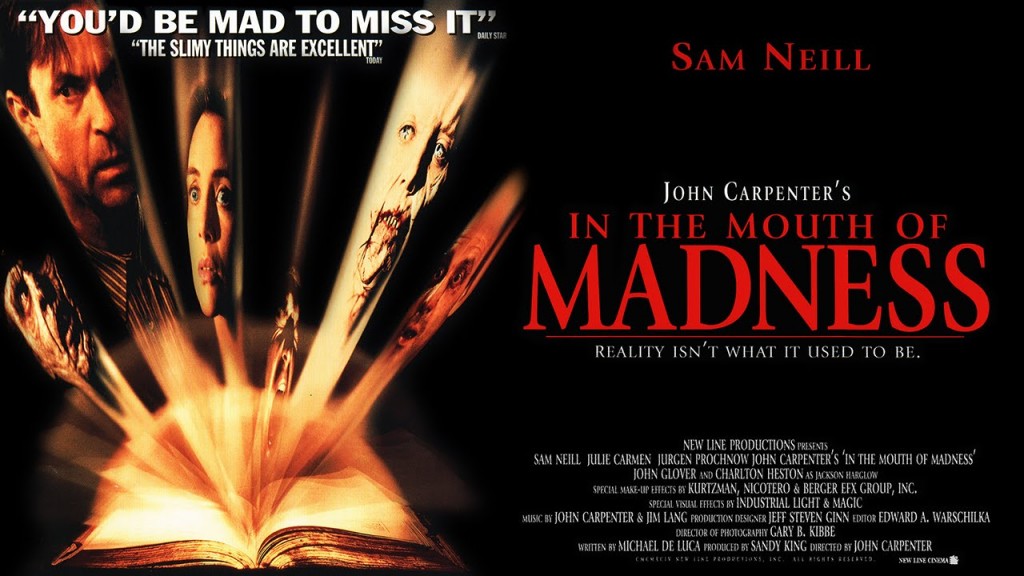
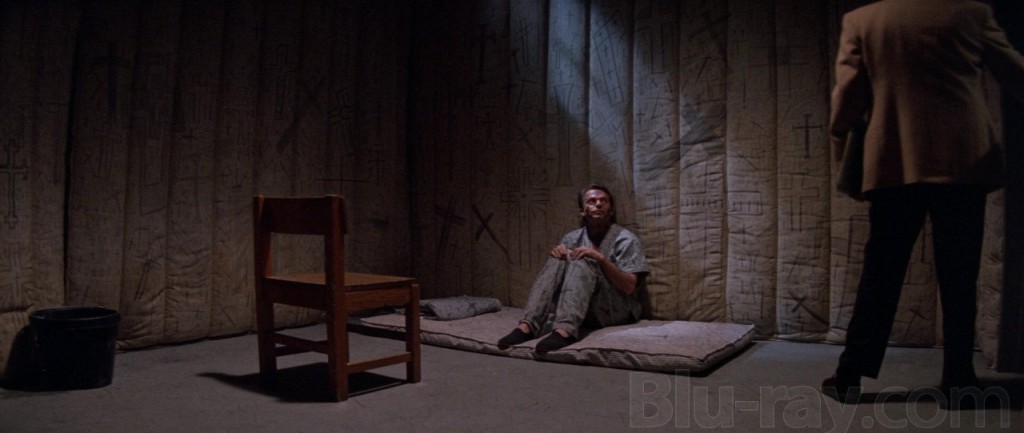
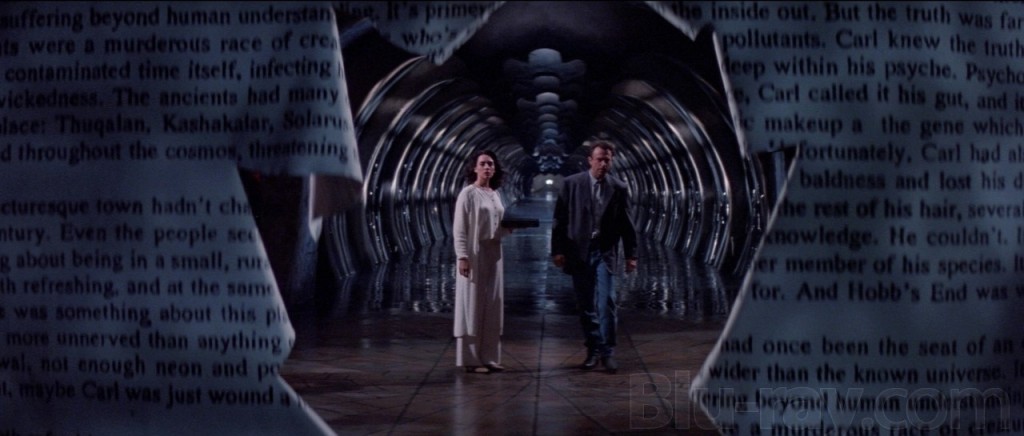
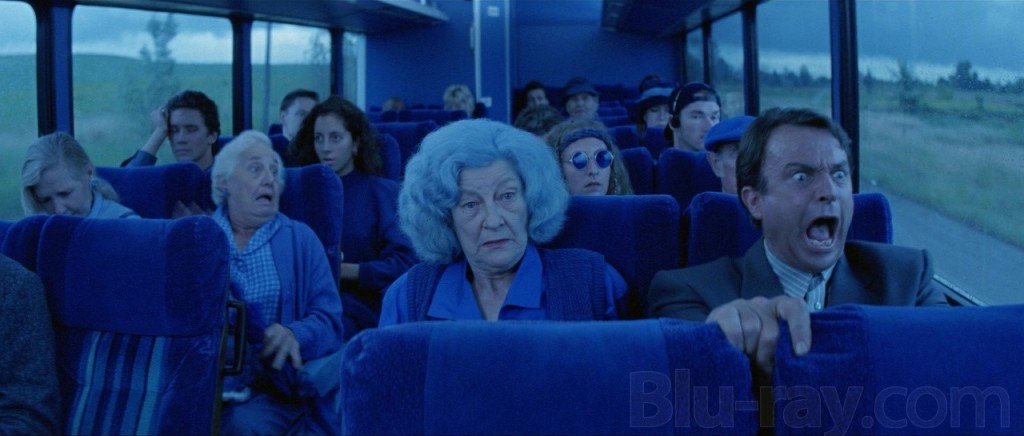
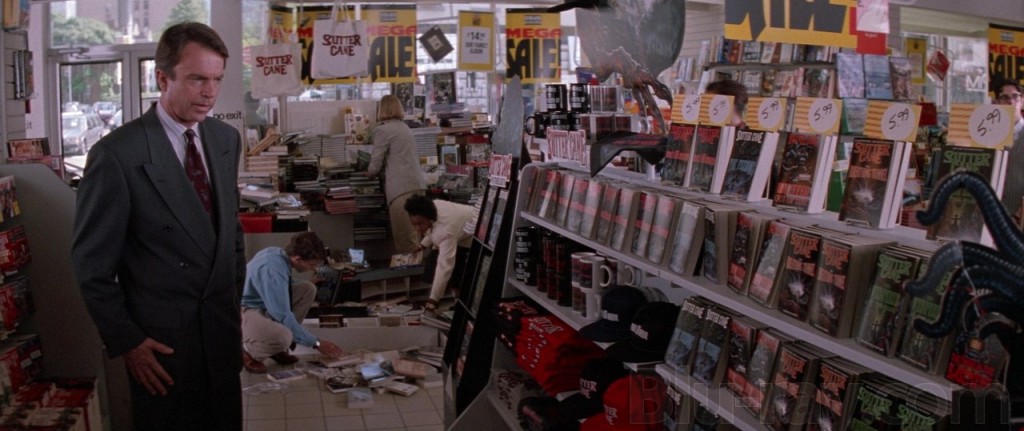
At least it did better than Highlander 3? (Although that was in it second week in theaters, if I’m reading the chart correctly.)
Yeah, Joe, Highlander 3 was in Week 2. It still made about $4 million more than In the Mouth of Madness. But then again, look which film we’re still talking about.
Highlander 3: Well, At Least It’s Not Highlander 2.
This is really a neglected gem, but as you say, Ryan, it was never destined for big box office. And that’s not a bug, it’s a feature.